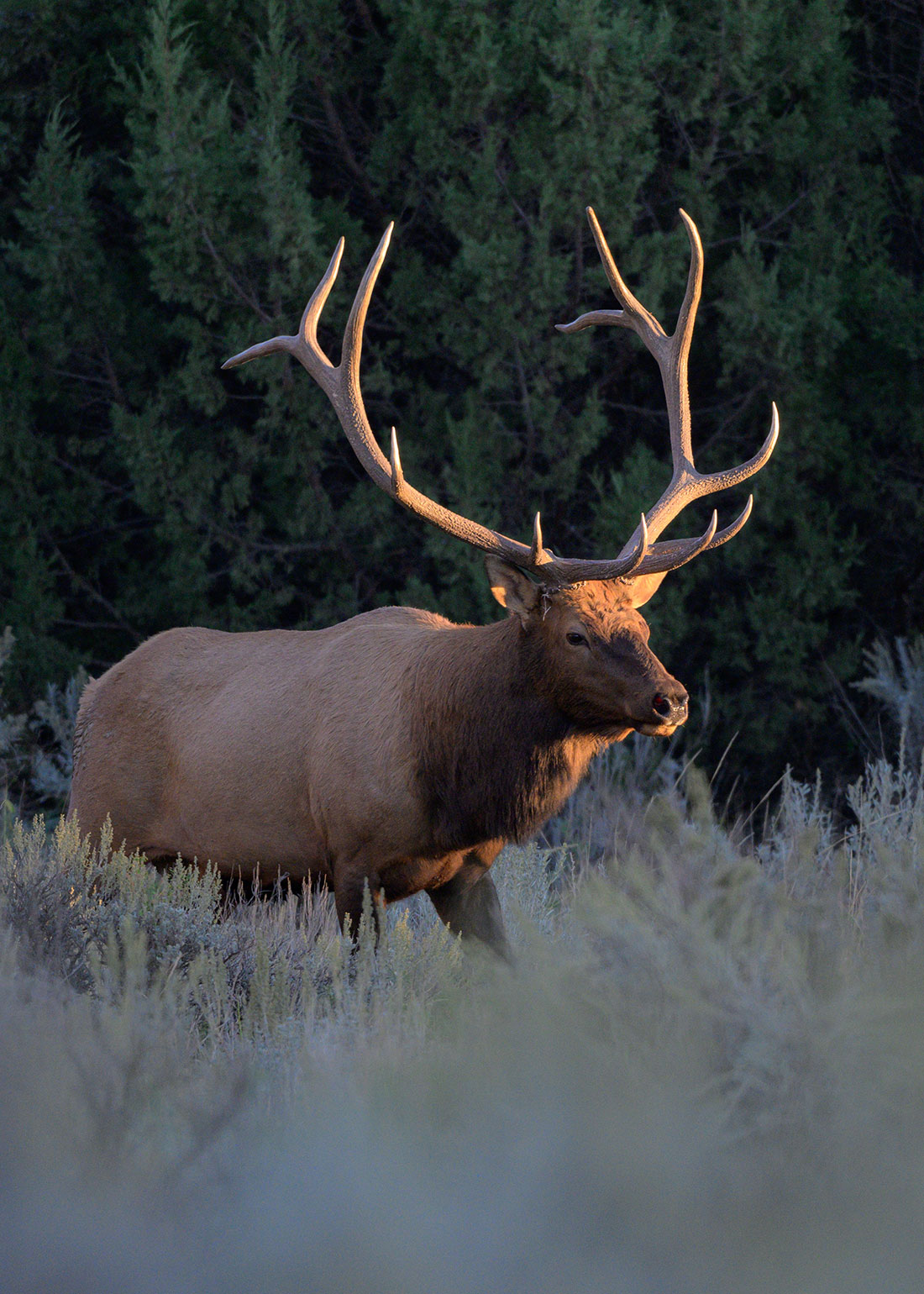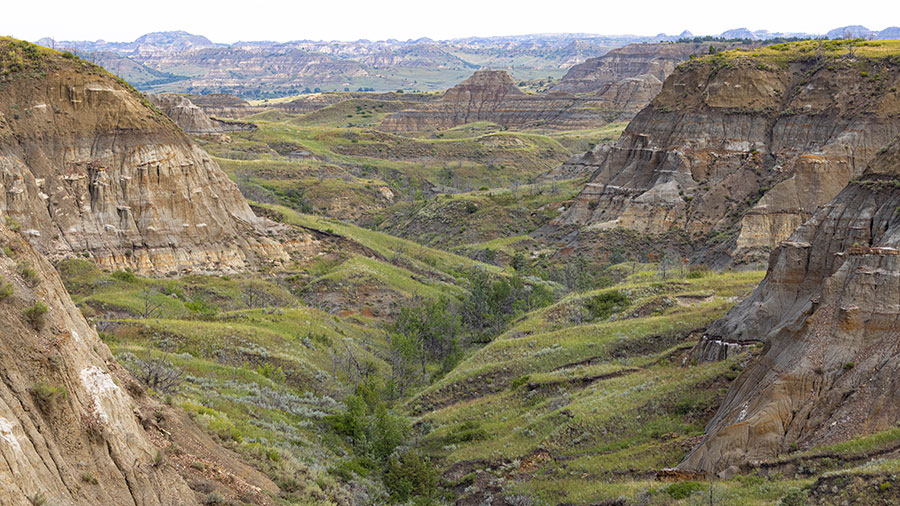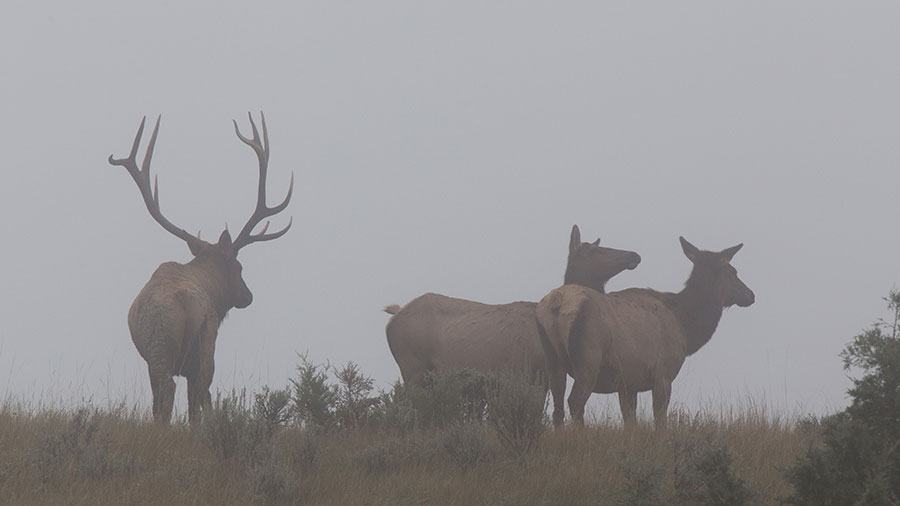Answers about Elk
Ron Wilson

Findings from a five-year elk study in western North Dakota will help guide wildlife officials in the management of this once-in-a-lifetime species that continues to thrive in the rugged up and down of the badlands.
Starting in 2019, the North Dakota Game and Fish Department, in cooperation with the University of Montana, captured and fit 149 elk — mostly cows and some yearling and subadult bulls — with GPS collars to get an inside look into elk distribution and movements, resource selection and to identify a population monitoring technique to assess annual abundance.
Bruce Stillings, Department big game supervisor in Dickinson, said elk dynamics in the badlands changed considerably more than a decade ago after about 900 animals were culled from the South Unit of Theodore Roosevelt National Park.
“Once elk were hunted inside the park, a lot of elk dispersed both north and south of the park, and that’s when we started seeing small herds start to establish,” Stillings said. “Once we saw that these animals were going to be a long-term component in the western badlands, we knew there were things we needed to know, such as movements, home ranges, resource selection, what type of habitats they were using and survival rates. Plus, we needed to develop a population monitoring program.”
Dan Morina, Phd. student with the University of Montana, had plenty to work with when analyzing the nearly 1.1 million elk locations provided by the GPS units over the course of the study.
“Including the elk in the park, we determined that we have nine discrete herds in western North Dakota that overlap very, very little,” Stillings said. “That’s key for management purposes because we can define those areas when we have issues with too many elk within a particular herd. We can do targeted harvest approaches with private landowners to address those areas where they might be exceeding landowner tolerance.”
According to the study where the GPS units provided locations to researchers every two hours, the average home range of a cow elk is about 50 square miles, which is about a township and a half in size. A bull elk’s home range is about 70 square miles, or roughly two townships.
“On just an average day, elk are moving between 2 and 3 miles. So, it’s really good information on movements and home range,” Stillings said. “Our elk are non-migratory. They’re using much of the same seasonal range year-round with a lot of overlap. While we say that they’re non-migratory, we did identify some noteworthy dispersal movements from young bulls.”

Some of these bulls dispersed permanently to eastern Montana. The most notable movement was a young bull that zigged and zagged his way about 550 miles, crossing Lake Sakakawea multiple times, before continuing south to new, permanent digs where a small elk herd was already established in the Slim Buttes area near Reva, S.D. The young bull’s walkabout took 122 days.
Based on other literature concerning resource selection, Stillings said going into the study they knew that elk want to be away from disturbance and that’s exactly what they found with elk in the badlands.
“On average, they prefer to be at least a third of a mile out to about 1.6 miles away from an improved or unimproved road. And they also prefer to be about 1.6 miles from an active oil well, or a well that’s currently actively being drilled,” he said. “Again, this is based on about 1.1 million collared elk locations, so it’s really solid information.”


